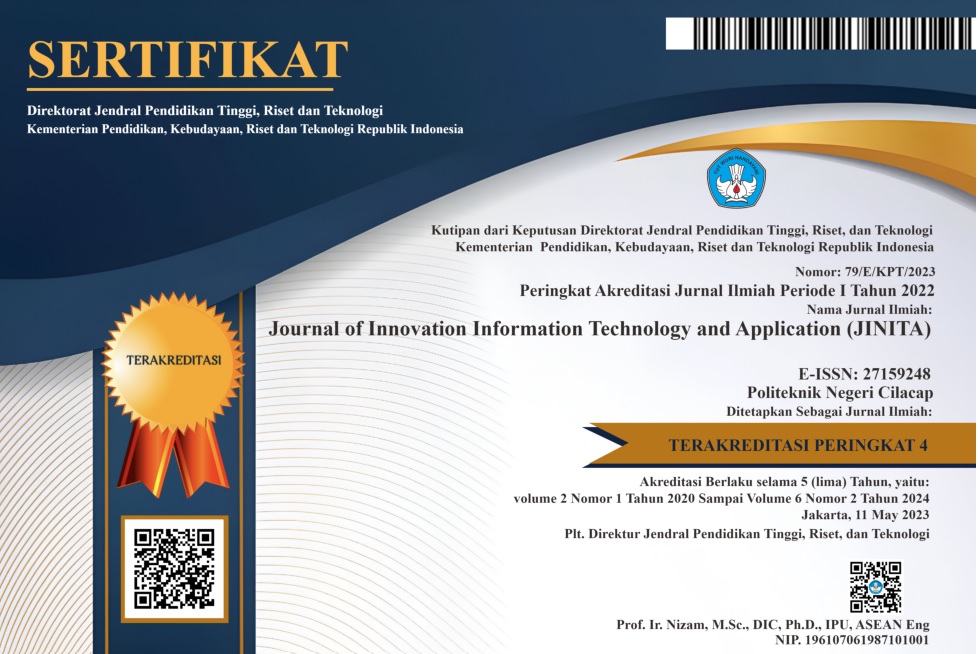Pengenalan dan Pemilahan Botol Kosong pada Reverse Vending Machine menggunakan metode Euclidean Distance
 Abstract views: 249
,
Abstract views: 249
,
 PDF (Bahasa Indonesia) downloads: 153
PDF (Bahasa Indonesia) downloads: 153
Abstract
Reverse Vending Machine is a machine where users will get a reward in the form of a deposit of money from collecting empty bottles. The Recognition and sorting of bottles currently done by several methods including the Recognition of materials using IR spectrometers, identification of bottles according to the barcode attached to the bottles, and using Image Processing technology to detect the shape of the bottles. In this study, the Recognition and sorting of empty bottles were carried out using three sensors. The Inductive Proximity sensor is used to detect metal or nonmetal bottles, the Loadcell sensor is used to calculate the weight of the bottle, and the LDR is used to detect the colour of the bottle based on the light intensity received by the LDR sensor. From tests conducted using the Euclidean Distance algorithm, it can be seen that Reverse Vending Machine can detect and sort the type of bottle waste based on 3 parameters namely weight, metal value, and colour of the bottle in real-time and can provide reward points to users according to bottle criteria.
Copyright (c) 2020 Journal of Innovation Information Technology and Application (JINITA)

This work is licensed under a Creative Commons Attribution 4.0 International License.
Authors who publish with this journal agree to the following terms:
- Authors retain copyright and grant the journal right of first publication with the work simultaneously licensed under a Creative Commons Attribution License that allows others to share the work with an acknowledgement of the work's authorship and initial publication in this journal.
- Authors are able to enter into separate, additional contractual arrangements for the non-exclusive distribution of the journal's published version of the work (e.g., post it to an institutional repository or publish it in a book), with an acknowledgement of its initial publication in this journal.
- Authors are permitted and encouraged to post their work online (e.g., in institutional repositories or on their website) prior to and during the submission process, as it can lead to productive exchanges, as well as earlier and greater citation of published work (See The Effect of Open Access).
















